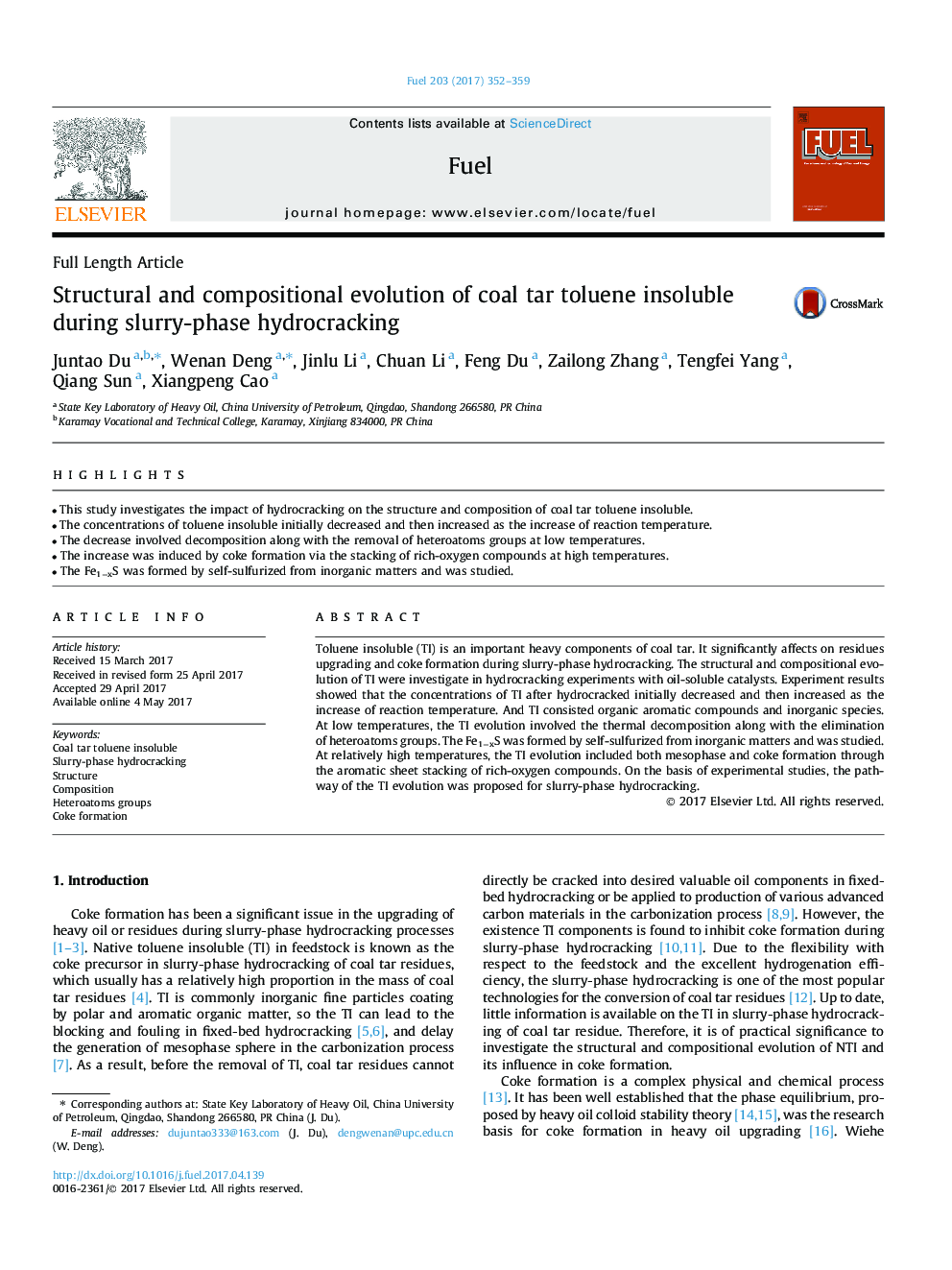| کد مقاله | کد نشریه | سال انتشار | مقاله انگلیسی | نسخه تمام متن |
|---|---|---|---|---|
| 6474329 | 1424961 | 2017 | 8 صفحه PDF | دانلود رایگان |

- This study investigates the impact of hydrocracking on the structure and composition of coal tar toluene insoluble.
- The concentrations of toluene insoluble initially decreased and then increased as the increase of reaction temperature.
- The decrease involved decomposition along with the removal of heteroatoms groups at low temperatures.
- The increase was induced by coke formation via the stacking of rich-oxygen compounds at high temperatures.
- The Fe1âxS was formed by self-sulfurized from inorganic matters and was studied.
Toluene insoluble (TI) is an important heavy components of coal tar. It significantly affects on residues upgrading and coke formation during slurry-phase hydrocracking. The structural and compositional evolution of TI were investigate in hydrocracking experiments with oil-soluble catalysts. Experiment results showed that the concentrations of TI after hydrocracked initially decreased and then increased as the increase of reaction temperature. And TI consisted organic aromatic compounds and inorganic species. At low temperatures, the TI evolution involved the thermal decomposition along with the elimination of heteroatoms groups. The Fe1âxS was formed by self-sulfurized from inorganic matters and was studied. At relatively high temperatures, the TI evolution included both mesophase and coke formation through the aromatic sheet stacking of rich-oxygen compounds. On the basis of experimental studies, the pathway of the TI evolution was proposed for slurry-phase hydrocracking.
Journal: Fuel - Volume 203, 1 September 2017, Pages 352-359